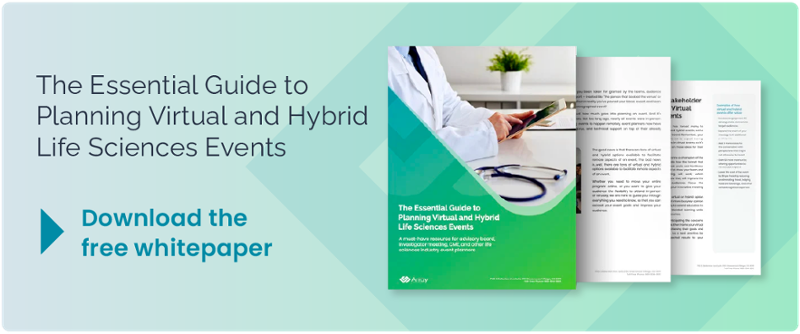5 Insights From Our 2021 Virtual Events Report
May 14, 2021 •Array Team
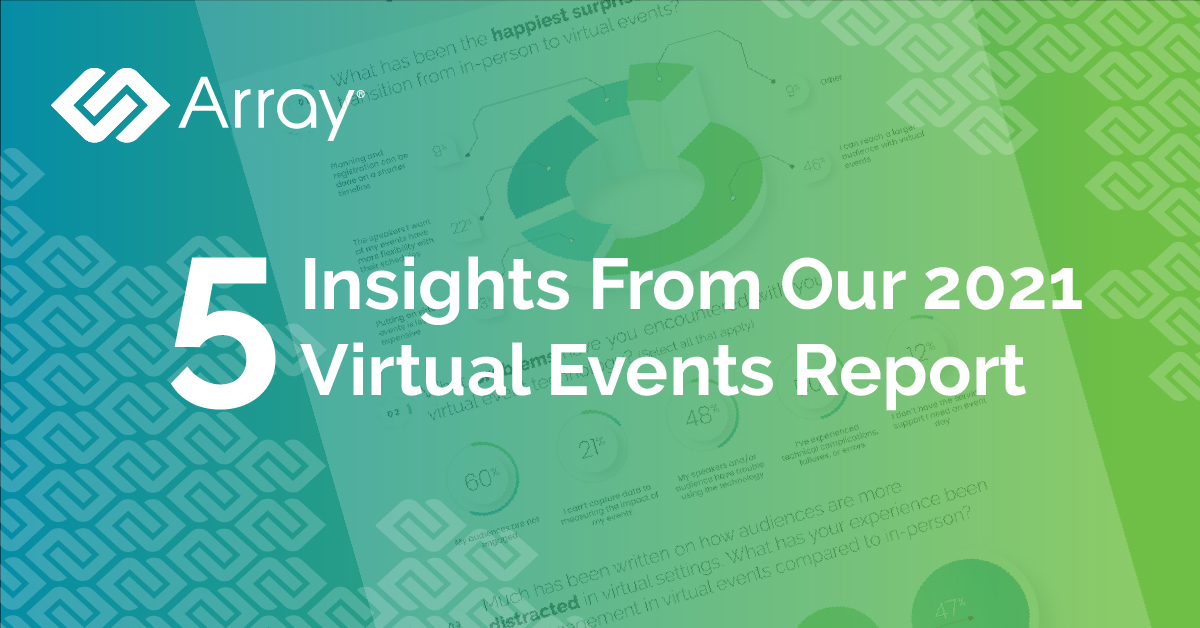
After more than a year of virtual events, meeting planners have encountered distracted audiences, technical snafus, and a serious lack of actionable data.
We see those challenges as opportunities to learn how to create better, more engaging virtual events in 2021.
In our recent webinar, we took a deep dive into the results of our 2021 Virtual Events Survey — conducted in partnership with Questex and the Pharma Meeting Pros Summit.
The data gave us insights into how life sciences event planners can improve virtual events and successfully shift to hybrid in the coming year.
Download the full infographic or keep reading for our 5 key insights.
1. Virtual events can reach a larger audience.
Transitioning to virtual events hasn’t always been a smooth process, but many event planners found happy surprises along the way. 46% of survey participants enjoyed the advantage of reaching a larger audience thanks to virtual events.
As attending events remotely became necessary, planners found that their audiences were larger than with in-person events. In the future, planners may be able to utilize a hybrid format to have the best of both worlds – expanding their audience while maintaining the unique benefits of an in-person event, like networking.
More advantages of virtual events:
- I can reach a larger audience with virtual events - 46%
- The speakers I want at my events have more flexibility with their schedules - 22%
- Planning and registration can be done in a shorter timeline - 9%
- Putting on virtual events is less expensive - 13%
- Other - 9%
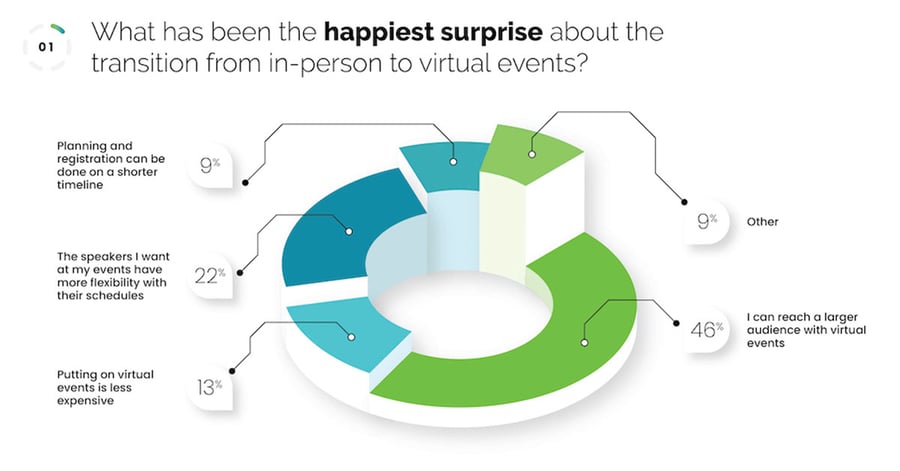
2. Audiences at virtual events are not engaged.
When asked “What problems have you encountered with virtual event technology?” 60% of the life sciences event planners we surveyed answered “My audiences are not engaged.”
However, it is important to note, not everyone has the same definition of engagement. Some believe that engagement at a virtual event means having your camera on and looking at the screen. Others see speaking as engagement, so audience members that don’t ask a question or offer an opinion are not considered engaged.
At Array, we consider engagement to be any act that leads an audience member to provide data. By that metric, answering a poll, asking a question, or even simply taking a note on a slide would count as engagement. An audience member can be completely silent and still be engaged and provide valuable data.
Other challenges of virtual events:
- I can’t capture data to measure the impact of my events - 21%
- My speakers and/or audience have trouble using the technology - 48%
- I’ve experienced technical complications, failure, or errors - 50%
- I don’t have the service or support I need on event day - 12%
If you’ve dealt with these frustrating common problems, you are not alone. Array’s Content Engagement Solutions are helping event planners in the life sciences meet all of these challenges head on.
3. Virtual event audiences are more distracted than ever.
Much has been written on how audiences are more distracted in a virtual setting. When we asked our survey participants to rate their experience with engagement in a virtual setting compared to in-person, the results were not surprising.
47% said that they had experienced significantly less engagement in virtual event settings compared to in-person life sciences events.
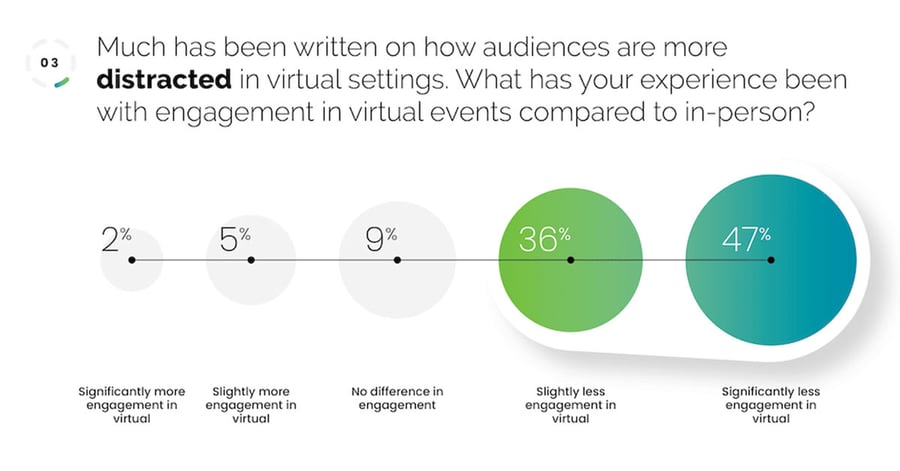
4. Life sciences event planners want and need more engagement data.
It’s essential for stakeholders to have audience engagement data, so they can understand if an event was meaningful for the audience and that event goals and outcomes were achieved.
Survey participants ranked “level of engagement of audience members” as their #1 type of audience data that is the most important for them to collect.
However, only 38% of participants are currently able to collect and measure this type of data with the current virtual event technology.
Planners believe their audiences are disengaged and believe they are seeing less engagement at virtual events, but this result poses the question, how do they know their audiences are disengaged if they cannot event measure engagement in a virtual setting?
There is a data gap that desperately needs to be filled so that event planners can properly evaluate audience engagement, measure what is working and what is not, and set a course for improvement.
Read more about how to use content engagement solutions to measure audience engagement.
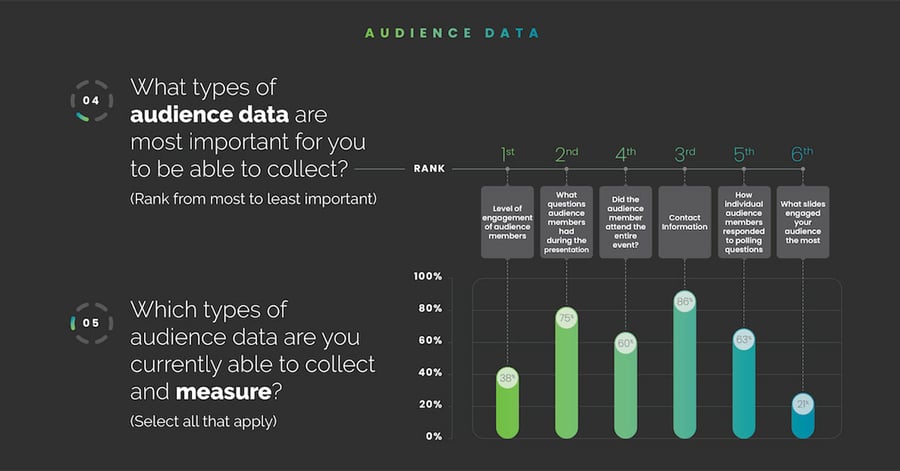
5. Improving engagement is something we can (almost) all agree on.
It’s not easy to get a majority of people to agree on anything these days, but 93% of our survey participants agreed on one thing — they want to improve engagement at their virtual events.
At Array, we know how to help you improve audience engagement at virtual events. Our technology and services offer event planners a stress-free solution for presenting content, engaging audiences, and measuring impact across your in-person, virtual, and hybrid events.
Interested in improving engagement at your next virtual event? Schedule a consultation.




